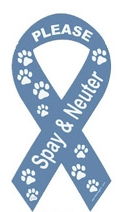Studies from the last decade provided some scientific proof that cancer, even in its early stages, can be detected by olfactory means.
There are medical detecting dogs, trained to smell samples of urine and exhaled breath from volunteer patients, as there is proof of dogs' ability to detect what are believed to be volatile organic compounds produced by different forms of cancer and exhaled on the breath or excreted in urine.
Initially, things started from anecdotal stories about dogs alerting their owners that something is not quite right with certain parts of their body; today, there is enough motivation and belief to conduct more advanced studies. Hopefully, they will produce improved results in the future.
The first reported studies, conducted in 2004, to detect bladder cancer, reported about 40% diagnostic accuracy. In 2011, studies for detecting prostate cancer by dog sniffing urine, reported more than 90% sensitivity and 90% specificity. Other studies from the same year, investigating colorectal cancer screening demonstrated even better results: more than 95% sensitivity and 99% specificity. (Sensitivity and specificity are factors which determine the accuracy, identifying positive, respectively negative results).
Current studies are focused on determining what exactly the dogs can smell in cancer patients and, hopefully, the future will bring an improvement in the management of this disease, by exploring a dogs' potential to help.
What specific breeds are used for cancer detection and how does the process work?
Dogs trained to screen samples are breeds with a high instinct for hunting, as finding the cancer is in some sort a game hunt to them. Many breeds and mixtures of breeds can be used, the condition is to be healthy, have good sense of smell and enjoy hunting for things. The training method to detect cancer is based on rewards and takes a lot of time of sniffing samples in order to understand what they are looking for. A dog owner will not be able to train his dog to detect cancer.
Cancer detection dogs do not interact directly with cancer patients; they only work on samples, in their training environment, 3-4 times a week. In the rest of the time, they stay with their owners, living the existence of normal pets.
In the cancer detecting process, they are able to screen hundreds of samples every week and researchers hope that dogs will be able to regularly provide their non-invasive type of screening service that could eventually be developed to provide high-accuracy results, even when it comes to the most difficult to diagnose types of cancer. Scientists also hope that they will be able to mimic a dog`s nose qualities, but such invention is still a long way away, considering that the current prototypes are far below the sensitivity of a dog`s nose (which is of three hundred million sensory receptors).
Although many voices say that using dogs in medical labs is not a realistic goal, there are already cancer sniffing dogs that have joined hospital staff in California. Maybe constant research will also reveal, at a certain point, that dogs are actually able to detect not only cancer but other diseases too.




